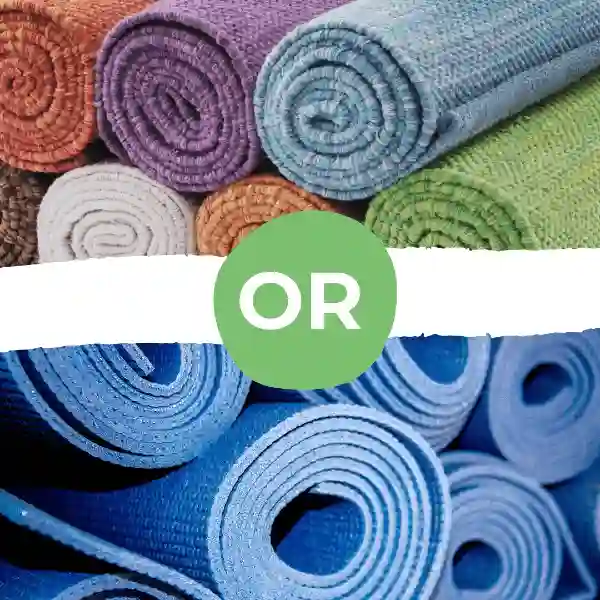Yoga Mats Are an Important Part of Your Practice
A yoga mat is an integral to one’s practice, no matter where they may be executing the asanas — even an outdoor practice, to help achieve the desired results. Not only does a yoga mat bring comfort and stability with postures, but choosing the right mat can help harmonize the mind, body, and spirit with the nature around us. Choosing an eco-friendly, handmade yoga mat provides the yogi with inherent over machine-made mats made of rubber or one made with PVC.
With so many yoga mats to choose from, we can make a responsible decision, that’s right for us and the environment. Let’s dive further into what one should look for in an eco-friendly yoga mat.
How Can I Tell if a Mat Is Eco-Friendly?
There are many companies that try and to be conscious of how their products are made and where their materials are sourced. While this does make choosing a sustainable and eco-friendly mat easier than it was before, as consumers must also have an awareness of potential “green-washing” claims made by some mat makers.
An true Eco-Friendly hand-made yoga mat should have these qualities:
- Hand Woven Of Natural Materials
- Made Sustainably & Ethically Made
- Hand-made without the use of electricity
- Machine or hand washable
- PVC Free
- Recyclable
- Non-Toxic
Materials Used – An Ecological Responsibility
There’s an assortment of natural materials that can be used to make a yoga mat that is durable, long-lasting and can withstand a rigorous practice. Look for products that are made of 100% natural materials, that will not litter our oceans and the surrounding land, and are manufactured without the use of harmful chemicals that are dangerous for our body and the world we live in.
Some materials that may be used include natural cork, jute, rubber, wool, and cotton. By using such natural materials, we are able to harvest the power of nature without causing it harm. By doing so, we are leaving a smaller footprint in the world.
Handmade Mats Allow the Earth to Breathe
Think about it. Handmade products evoke a pride-of-craftsmanship and can be a labor of love.. A hand-woven mat that has been on the loom of a for days, has an essence and quality that can not be replicated by a machine-made piece of extruded rubber or plastic.
From the weaver’s hands to the yogi’s hands a special bond is fashioned.
Creating yoga mats by hand, is as natural as the earth. Mats made in the sun, wind and other elements seem to have an intrinsic value and longevity. Choosing handmade mats over commercially produced ones helps the weaving profession, one that has an ancient lineage in India (link to article on Kabir). The purchase of hand-made, sustainable yoga mats helps support this profession insure this traditional practice continues.
Ethically made products and why we should promote them
Ethically made products support the economy and wellbeing of the individuals who worked hard to make them. When a yoga mat is ethically made, it does not only mean it is sourced sustainably. It also means that laborers are paid fair wages, that no child labor is involved in its creation, and that workers are in a safe and secure working environment. Supporting ethically made products creates a healthy atmosphere for everyone, from the sourcing of materials, to the suppliers and laborers, from their hands to yours.
Natural Materials in Yoga Mats
While the use of different natural materials are wonderful in their own way, they have characteristics in and of themselves that you may want to consider.
Jute
Jute is a plant with a naturally rough texture and is a material that is friendly to the wallet. It is a definite pro-planet material that can be sustainably sourced and if damaged, could go back to nature easily without harm. However, yogis who practice more vigorous types of yoga (Astanga) do not find it appealing because of the burns and overall feel of this mat. So it’s probably a good choice for a gentler practice.
Pros
- Cheap
- Biodegradable
- Renewable
- Provides good traction
- Lightweight
Cons
- Becomes brittle when exposed to the sun for long periods of time
- Releases some strong but non-toxic odor so needs to be air dried for days before using for the first time
- Naturally rough texture may not be comfortable for some
- Thin
Rubber
Natural rubber mats are enjoyed by some yoga practitioners because of its durability and supportive qualities due to its range in thicknesses that are made available by manufacturers. It is also one of the most long-lasting products available in the market. Just be sure to check that it is sustainably sourced.
Pros
- Resistant to slip
- Cushy and comfortable
- Durable – to a point
- Comes in different thickness
Cons
- Contains latex
- Initially can have a pungent odor that may be objectionable. This can dissipates with time
- Has to be frequently replaced
- Can melt and crumble after extended periods in the sun.
Cork
Many wonder if cork is truly eco-friendly. From wine bottle stoppers to pinboards in the office and now the industry has gone to create yoga mats with them as well. Indeed, cork is a versatile and eco-friendly material nature has gifted us with. However, the only thing that you might want to think of when considering cork as a yoga mat is that it is quite heavier than other materials so it may not be a good idea to use a cork yoga mat if you often practice outside the house or in a studio where you don’t have anywhere to put it.
Pros
- Antimicrobial
- Self-cleaning
- Good surface grip when wet
Cons
- Heavier compared to most mats
- Cost
- Faint cork smell is an ‘acquired taste’
Cotton
Cotton is a material used for a long time and is a staple in traditional Mysore and Ashtanga practice. It easily absorbs sweat and provides good traction as it moistens and is a perfect companion when you want to take yoga to the beach. What’s good about cotton is its ability to absorb moisture and liquid and hold them well. As your cotton mat moistens, the traction becomes better and better. This is the perfect material to use for hot yoga practices.
Pros
- Absorbs sweat well and keeps mat in place
- Renewable
- Biodegradable
- Easy to clean
- Washable
- Durable and long lasting
Cons
- Can Slip (on the bottom) on smooth surfaces. Pads are available to prevent slippage.
- As a classic and traditional material, cotton with a tight weave is firm. Some people prefer a softer surface
Color Is More Than Just Cosmetics
Believe it or not, choosing the right yoga mat is more than just the materials. Chromotherapy is a therapeutic method that has been around since 500 BC. Color affects the way we think about ourselves, our surroundings, and our emotions in general. So it’s no surprise that yoga also incorporates color in order to connect everything around us and focus our minds and center our bodies to achieve better results.
Here are some colors to look out for and what they can do for you.
Blue (Water)
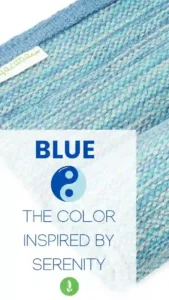
Symbolizes tranquility and serenity. Blue is a color of health as it is a positive color that calms the body and mind. It contains cool vibrations to help you relax and attain solitude, peace, and spiritual sensitivity. Find our blue mats here: Water
White (Air)
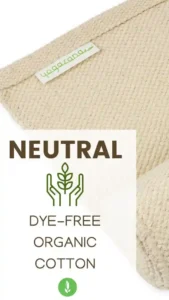
White is a color that signifies purity, goodness, safety, and cleanliness. It is a color worn and used in Kundalini yoga because it is believed that white as a prism that balances all colors. It is also believed that white can expand your aura. According to Yogi Bhajan, they use white because they “wanted to develop a very fast, progressive, spiritual and technical method of all the colors”. Find our dye-free mats here: Air
Purple (Ether)

Purple is a perfect balance between red and blue tying strength and dignity together. It also represents spirituality and passion, and it is considered a good color for meditation. Adding purple to your yoga practice helps to align you with the Oneness of the Universe, to be spiritually connected and fulfilled. Find our purple mats here: Ether
Orange (Saffron)
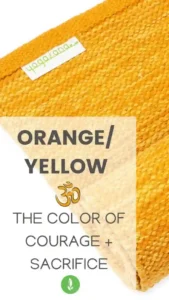
In Buddhism, monks wear the color of saffron to symbolize simplicity as well as their detachment from any material things in order to attain Moksha.
Orange is a color for wisdom. It is a loud color that calls for attention and is hence used to denote energy and joy. It emanates when the sun rises to call for a new beginning or a new light. Orange can also be a symbol of maturity like a fruit that has ripened. Orange mats can be found here: Saffron
Brown (Earth)
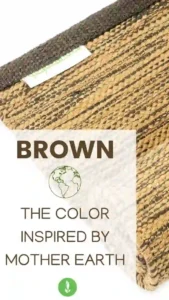
Brown is a neutral color that helps stabilize mind and body. It helps you feel grounded (no pun intended) to help make you feel a sense of belonging. Brown helps your mind and body to focus by creating a peaceful atmosphere and connect every natural thing to you.
Brown is an organic color that is present in your natural surroundings. And although it looks dull, brown is associated with the feeling of friendliness and warmth, allowing you to relax in the company of others. Shop your brown mat here: Earth
Green (Spring)
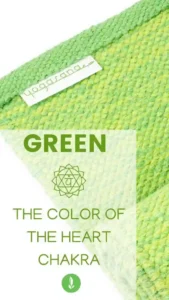
Green is the 4th chakra which is the color standing for heart, therefore it is considered to connote love, integration, and compassion. It gives off a soothing, calm, and relaxing feel which eases negative emotions and helps heal the mind and soul.
Green is the color of Spring. It not only helps stimulate growth but also helps renew and restore lost energy. If you find yourself wanting to heal your heart and invoke positive healing for your emotions, green is the way to go. Yogasana’s green mats are here: Spring
Red (Fire)

Excitement, energy, and power is what this color stimulates. It increases the activity of the brain, increases respiration, heart rate, and blood pressure. It is a warm color symbolizing the blood that gives life to our bodies, the color that gives us the feeling of excitement, and alerts us if there is danger ahead. Using red in yoga practice gives you courage and a stronger willpower. It tells your body to continue on despite the difficulty so that at the end of the day, you feel fulfilled and stable mentally, physically, and spiritually.
Selecting a proper yoga mat means more than choosing products based on budget and style. We should be conscience of the way your mat is made, the materials used, the recyclability of these materials and the skilled labor employed. Your wise choice will help to make a better world…now and in the long run. Find your red mat here: Fire
Picking Your Favorite Mat
Choosing the right color also helps to align your intentions to your practice and your heart desires.
In the end, what’s most important is to choose a mat that helps harmonize your practice and the space around you. Unite = Yoga


